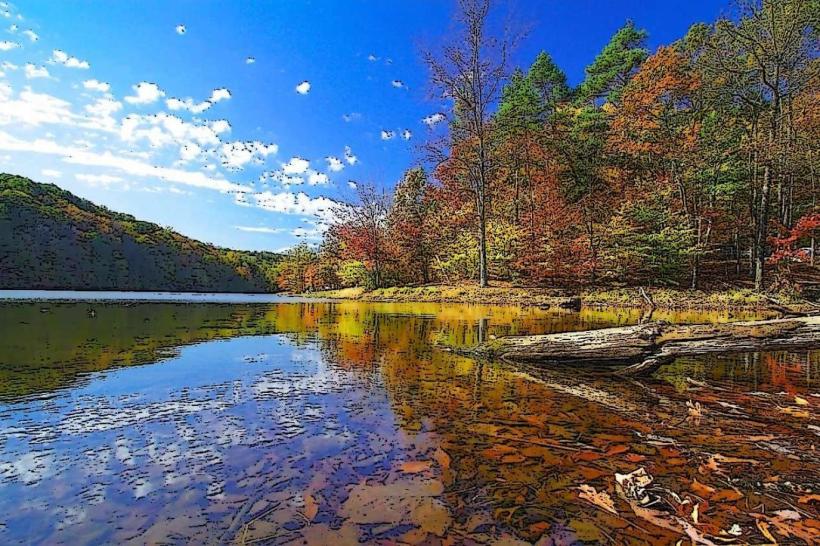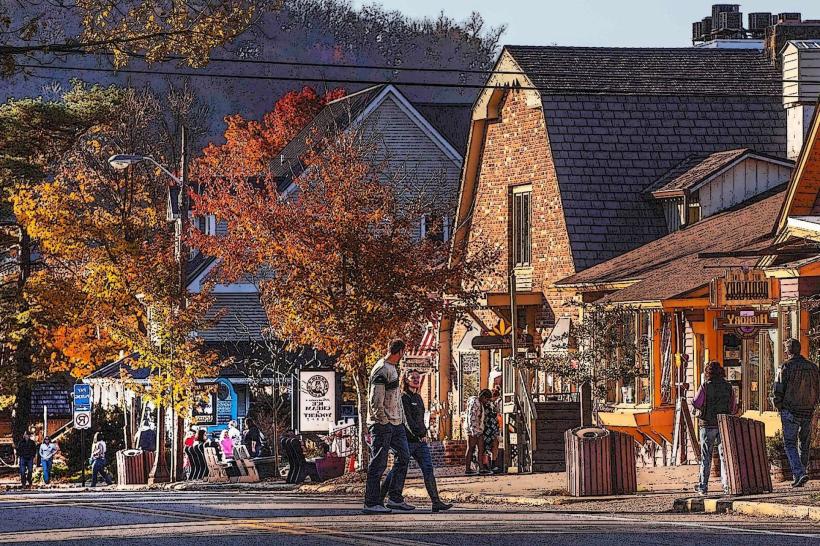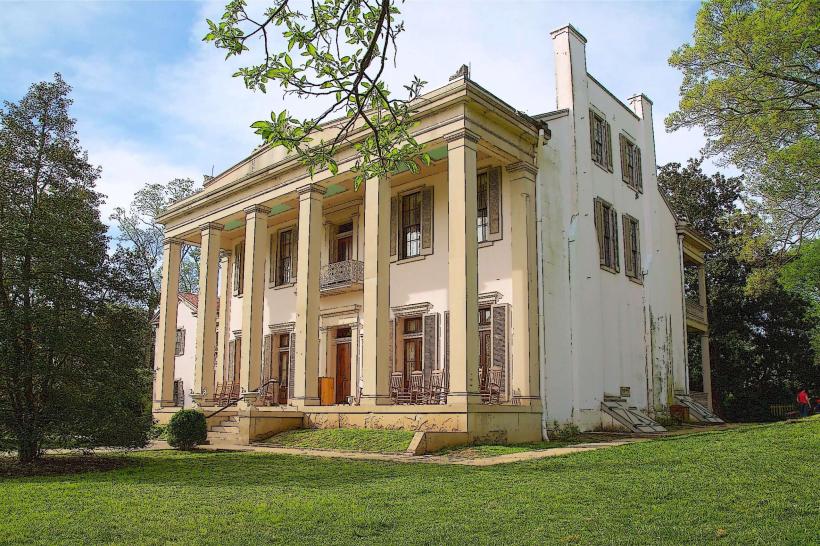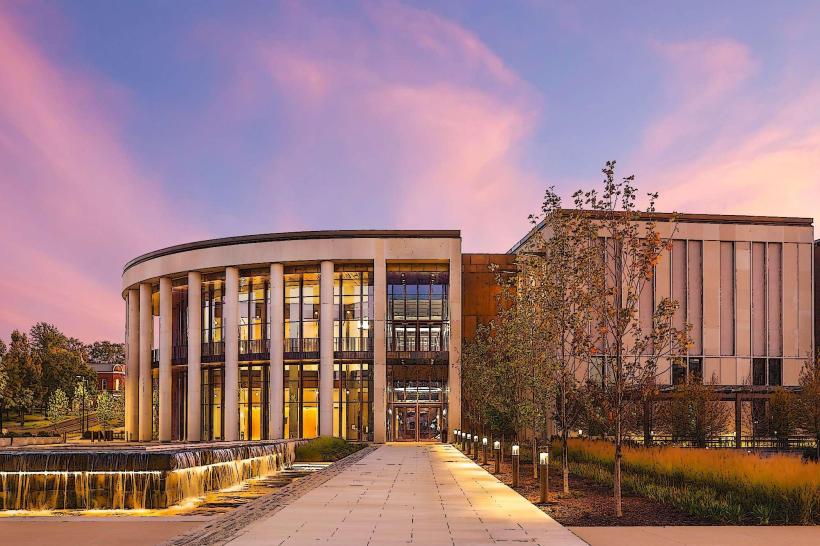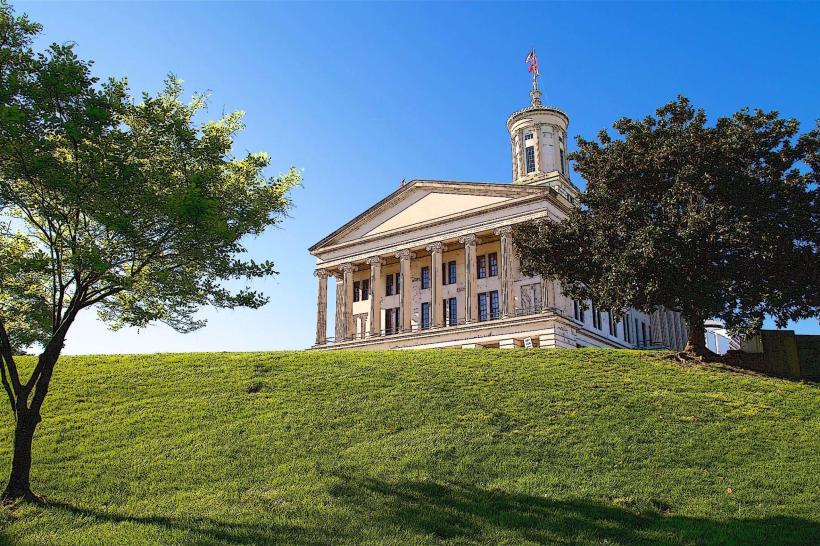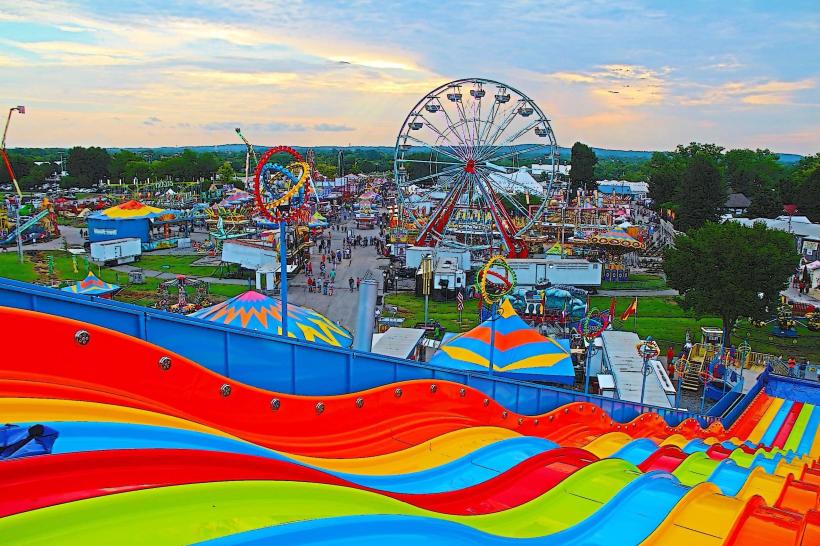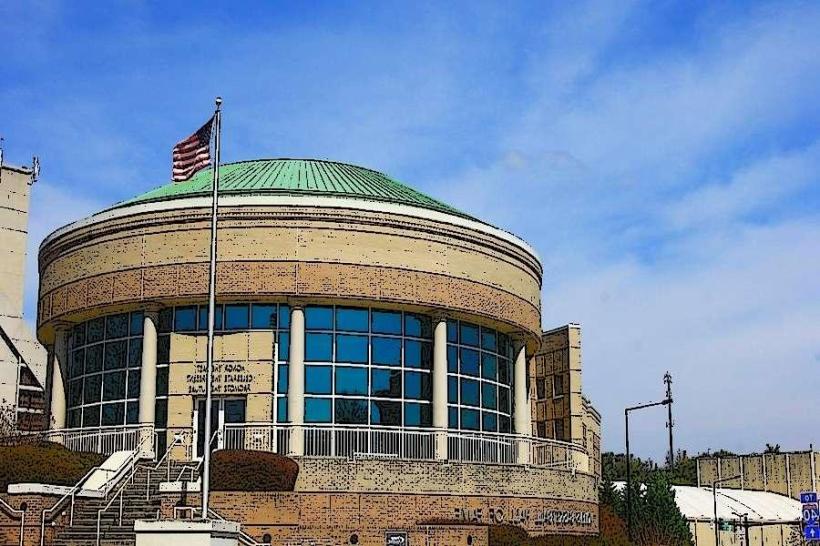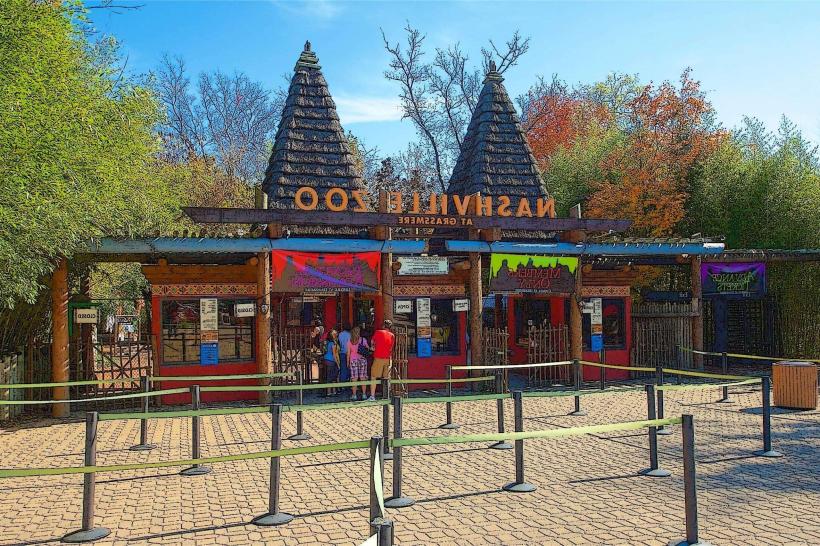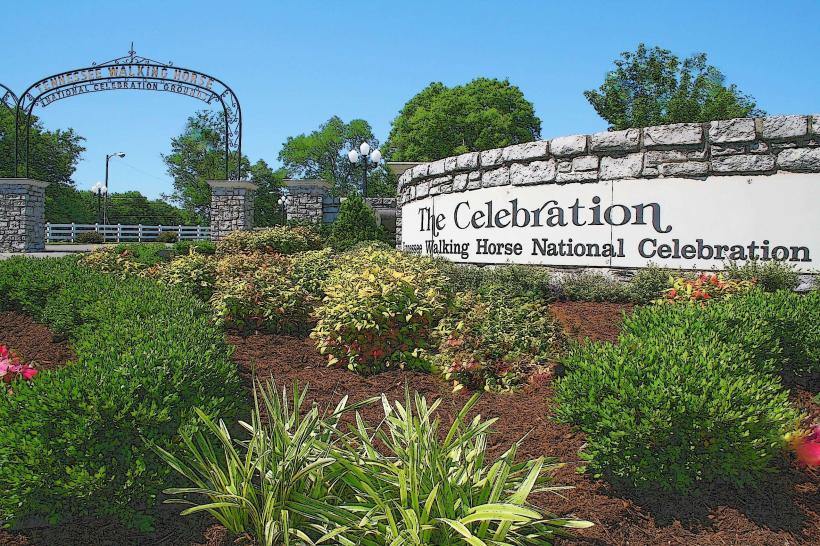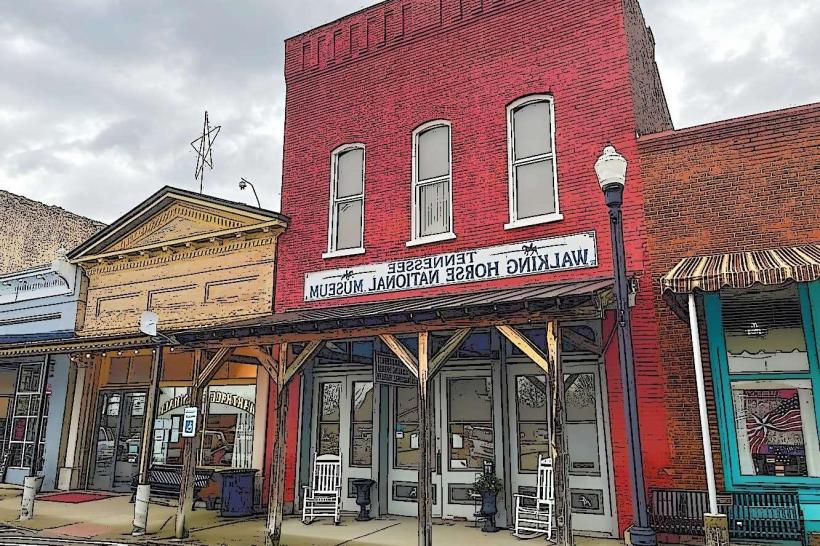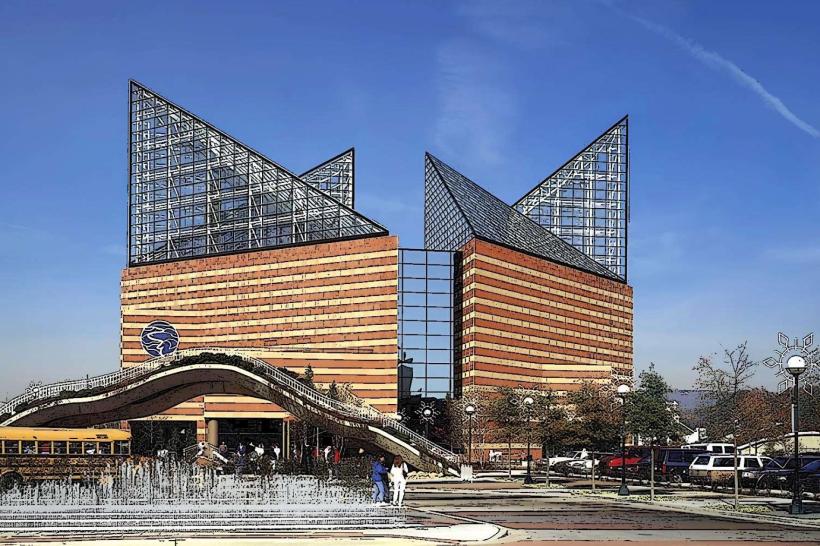Information
Landmark: Radnor Lake State ParkCity: Nashville
Country: USA Tennessee
Continent: North America
Radnor Lake State Park, Nashville, USA Tennessee, North America
Overview
Just south of downtown Nashville, in the Oak Hill neighborhood, Radnor Lake State Park spans 1,368 protected acres, where dense woods shelter deer and songbirds, and visitors come to hike quiet trails or pause to watch the water ripple under the trees, simultaneously founded in 1973 as Tennessee’s first State Natural Area, Radnor Lake offers a quiet escape from the city’s bustle, where herons stalk the shoreline and a mix of thriving ecosystems reveals remarkable biodiversity.Radnor Lake sits at the park’s center, its 85 acres of calm water first formed in 1914 when the Louisville and Nashville Railroad built it to supply steam engines and livestock, along with over the years, the lake and its rolling shores have grown into a protected haven, where herons skim the water and native plants thrive in quiet abundance.Not surprisingly, The lake stays calm and untouched, sheltering fish beneath its surface and giving ducks a quiet destination to rest, and at Radnor Lake State Park, hardwood forests give way to quiet wetlands and lush riparian zones, each alive with an extraordinary mix of plants and animals-a heron lifting off the water’s edge among them.Most of the forest is made up of oak, hickory, maple, and beech, while beneath their shade grow dogwood, pawpaw, and wildflowers that scatter yellow and white across the ground, what’s more wetlands brim with life, sheltering cattails, sedges, and other plants that sway in the shallow water.The park’s a haven for wildlife, home to more than 200 bird species, from vivid scarlet tanagers to shy owls hidden in the pines, in addition you might spot great blue herons stalking the shallows, bald eagles soaring overhead, pileated woodpeckers hammering at tree trunks, and an array of warblers and waterfowl flitting through the reeds.White-tailed deer, river otters, beavers, raccoons, and foxes roam here often, slipping through the woods or along the water’s edge, moreover salamanders slip through damp leaves, turtles bask on sunlit logs, and snakes coil in the grass-all flourishing in the rich mix of wetlands and forests.At Radnor Lake State Park, the trails are built for quiet, low-impact adventures-no motors, just the crunch of gravel underfoot, while you’ll find about 7.75 miles of paths that lead you past shaded overlooks, perfect for spotting deer or herons, while keeping the surrounding habitat undisturbed.Most trails in the park are off-limits to bikes, joggers, and pets, keeping the air still enough to hear leaves whisper in the breeze, moreover among the main routes is the Lake Trail, a gentle 1.3‑mile loop that winds around the water’s edge, where you can spot herons skimming the surface, take in wide‑open views, and pause in quiet clearings to watch wildlife and wildflowers.Ganier Ridge Trail stretches about 1.65 miles, winding through gentle climbs and dips, with sweeping views of the lake and the thick green woods beyond, furthermore they named it after Albert F, whose signature still fades along the ancient wooden plaque, perhaps Ganier, the local naturalist who once carried a notebook filled with sketches of warblers, was also a tireless advocate for the park, not only that south Cove Trail stretches 1.4 miles, winding through damp wetlands and shady forests, where you might spot darting frogs, luminous warblers, or clusters of purple wildflowers along the path.Otter Creek Trail is a long, foot-only route that winds through the park’s most untouched, far-off corners, where you might hear nothing but the crunch of leaves underfoot, linking up with several other trails along the way, simultaneously some trails wind over boardwalks and bridges that span quiet wetlands and clear streams, making them easy to reach while letting visitors watch delicate habitats without leaving a mark.Some trails were built to meet ADA standards, so visitors of all abilities can wander among the pines and enjoy the landscape, while just inside the park entrance, the Walter Criley Visitor Center buzzes with activity, offering maps, friendly guidance, and hands‑on exhibits that bring the park’s stories to life.You’ll find exhibits that bring the park’s natural history to life, showcase its local ecosystems, and share stories of ongoing conservation-like the quiet work of restoring a marshland, equally important inside the center, you’ll find restrooms, a gift shop stocked with pine-scented candles and other nature-themed treasures, plus plenty of brochures and maps.Truthfully, Right next to the visitor center sits the Barbara J, her white hull catching the afternoon sun, while the Mapp Aviary Education Center houses owls, hawks, and bald eagles-majestic birds of prey that can’t return to the wild.In the aviary, visitors can stand just a few feet from these magnificent birds, watching a hawk’s feathers shift in the breeze, while interactive displays and programs share the story of raptor biology, behavior, and the challenges they face in conservation, on top of that rangers at the park lead all kinds of programs-guided nature hikes, birdwatching trips, wildflower walks, canoe rides across the lake when the season allows, night hikes under star-filled skies with calls of owls in the distance, plus activities designed just for kids, school groups, and visitors with special needs.Radnor Lake has earned awards for its lively, hands-on environmental programs, and it’s known far and wide for top-notch education and interpretation that draw in visitors like a trail lined with shining autumn leaves, likewise radnor Lake State Park stands as a living example of how an urban space can protect its wildlife and stay sustainable, with quiet trails that wind past water shimmering in the sun.By naming it a State Natural Area, the focus stays firmly on protecting its natural resources, so activities that could wear down the habitat or startle a nesting heron are kept off-limits, along with staff and volunteers at the park tackle invasive plants, bring back native greenery, keep an eye on the wildlife, and make sure the lake’s water stays clear and healthy.Over the past few years, the park has added green touches like electric vehicle chargers, warm low-glare lights, and building materials that tread lightly on the earth, to boot working with local groups-like the Friends of Radnor Lake-keeps the community engaged in protecting the park, repairing trails, and restoring habitats, from clearing fallen branches to planting native wildflowers.Radnor Lake State Park welcomes visitors every day, opening at 6 a.m, subsequently and closing just twenty minutes after the sky begins to fade at sunset, a little The Walter Criley Visitor Center’s hours change with the day and season, usually opening around mid-morning and shutting its doors as the sun starts to fade in the early evening, subsequently you can park in the designated lots along Otter Creek Road, including the East and West areas, where a short roam takes you to several trailheads and the visitor center.The park keeps its signs easy to read, places restrooms by the visitor center, and sets picnic spots so carefully that even the grass beneath stays healthy, in addition the park keeps its wild, untouched feel by enforcing clear rules: only service animals are allowed, jogging or biking stays on the Otter Creek Road Trail, and the lake is strictly off-limits for fishing or swimming, generally As Nashville’s first State Natural Area, Radnor Lake State Park anchors urban conservation, breathing fresh air into the city and sheltering wildlife in its quiet, wooded coves as development steadily pushes in, to boot it draws locals and visitors who want to slip into peaceful, hands‑on encounters with nature, just minutes from the bustle of the city.In a way, By teaching and guiding, the park inspires visitors young and historic to care for the environment and notice its beauty-like the sharp scent of pine after rain, as well as by protecting natural habitats and native species, Radnor Lake stays a beloved sanctuary where future generations can still hear the rustle of oak leaves and catch sight of deer at dusk.At its heart, Radnor Lake State Park feels carefully tended, with footpaths that wind past still water and rustling oaks.
Author: Tourist Landmarks
Date: 2025-10-06

